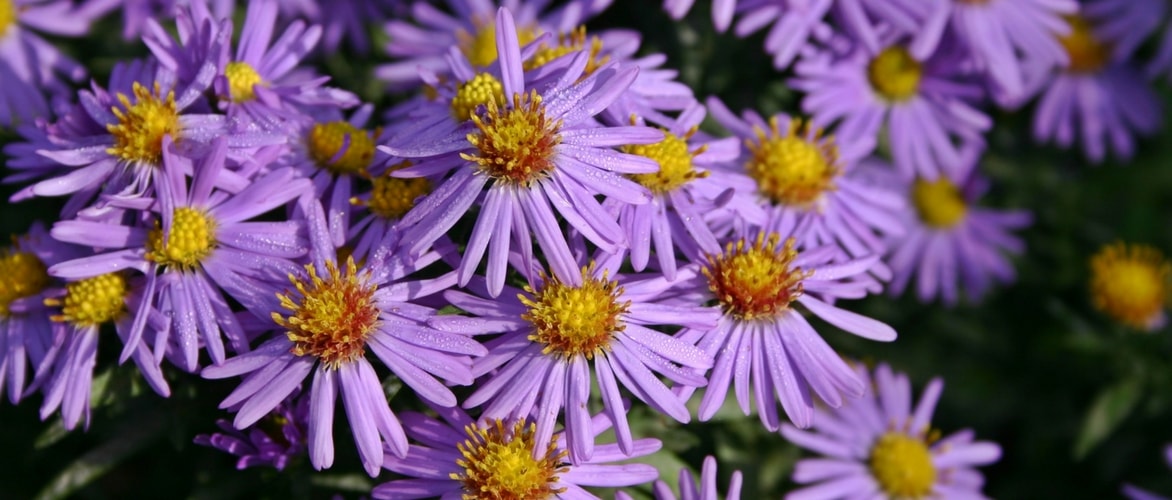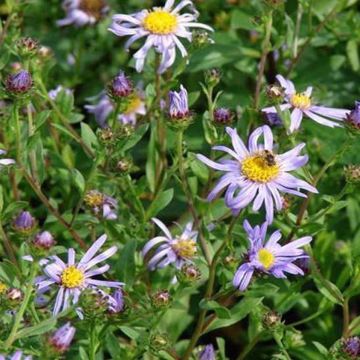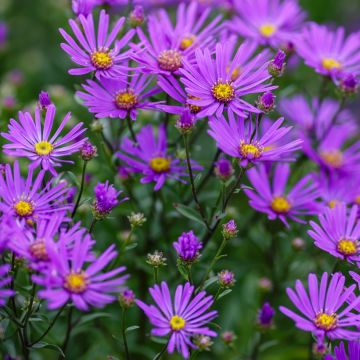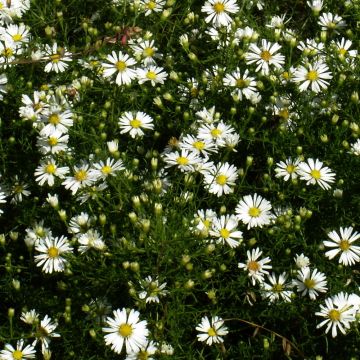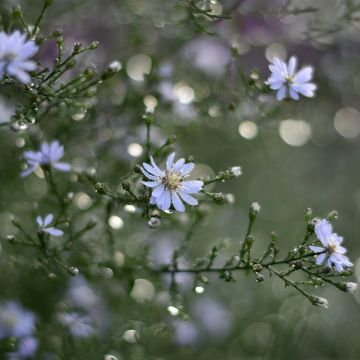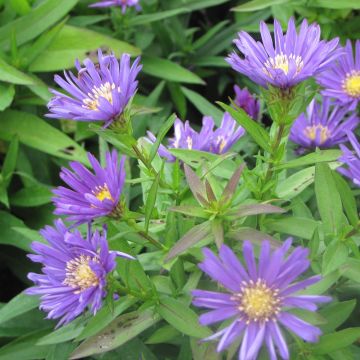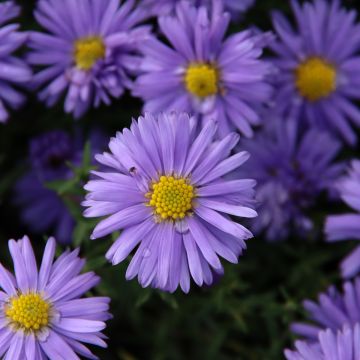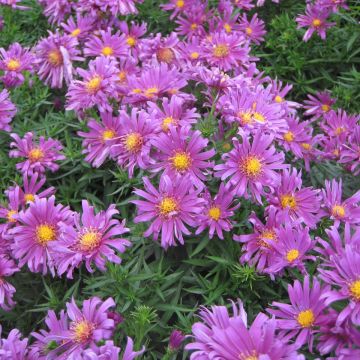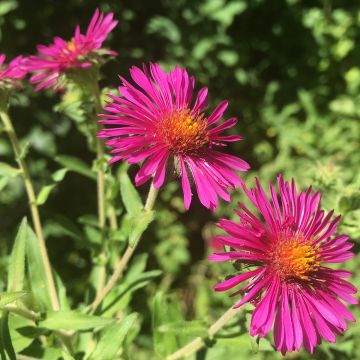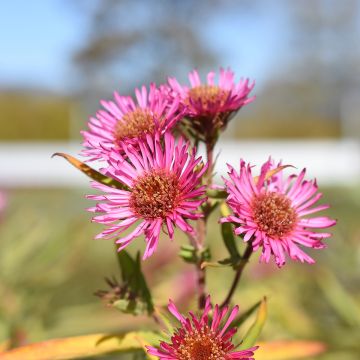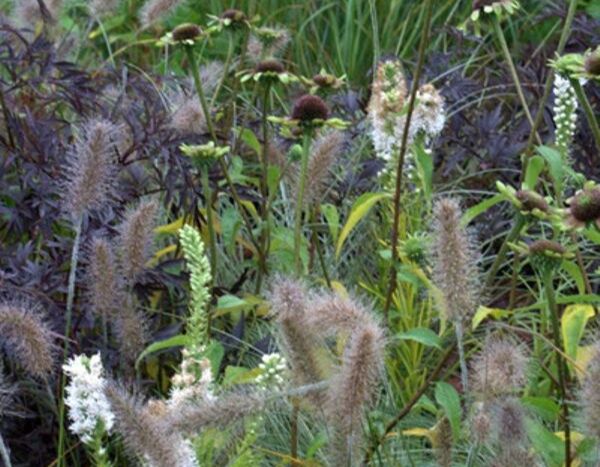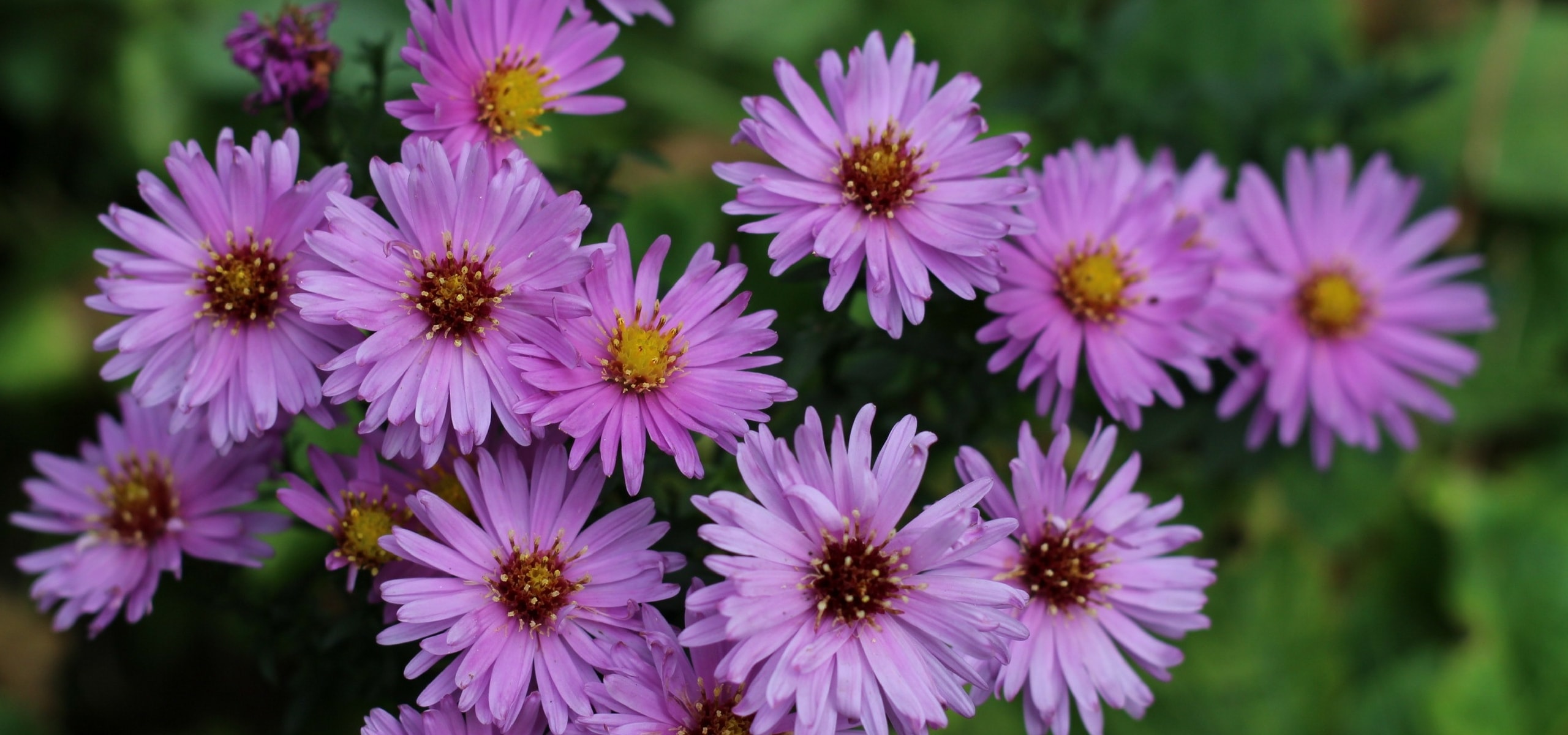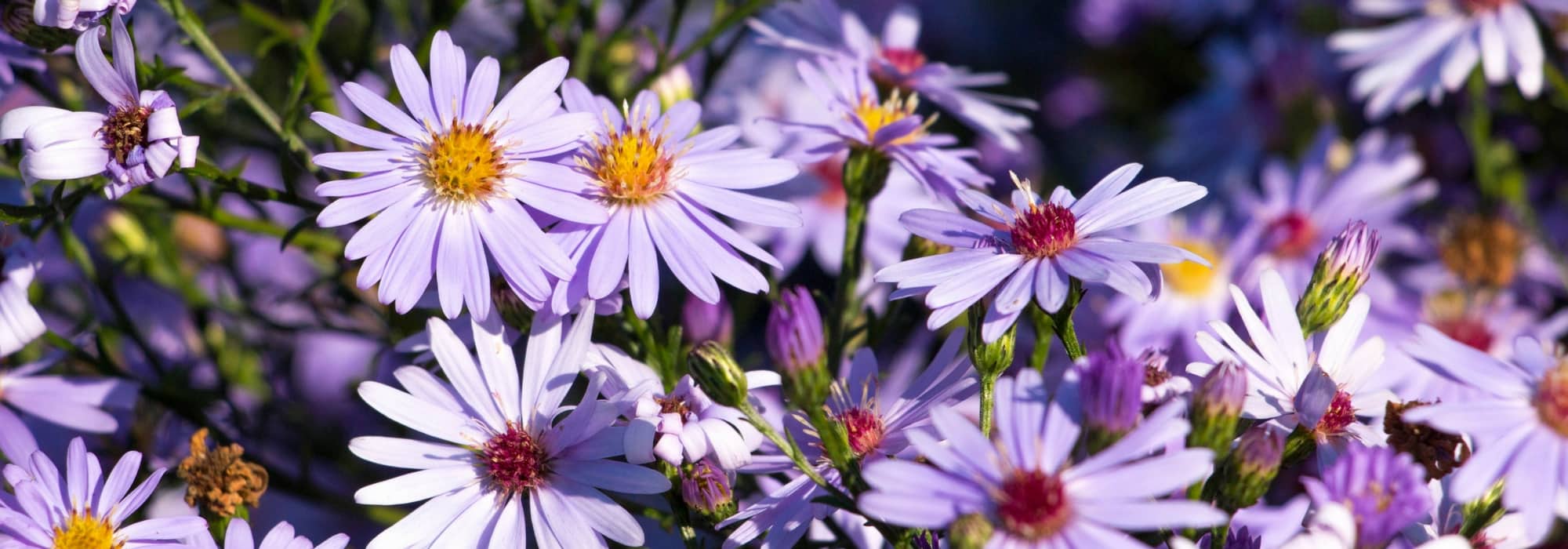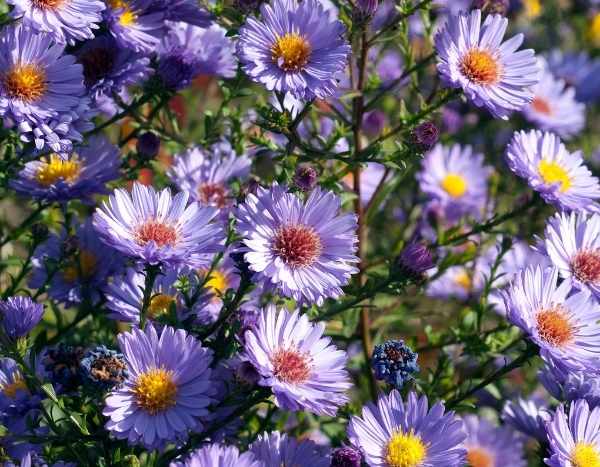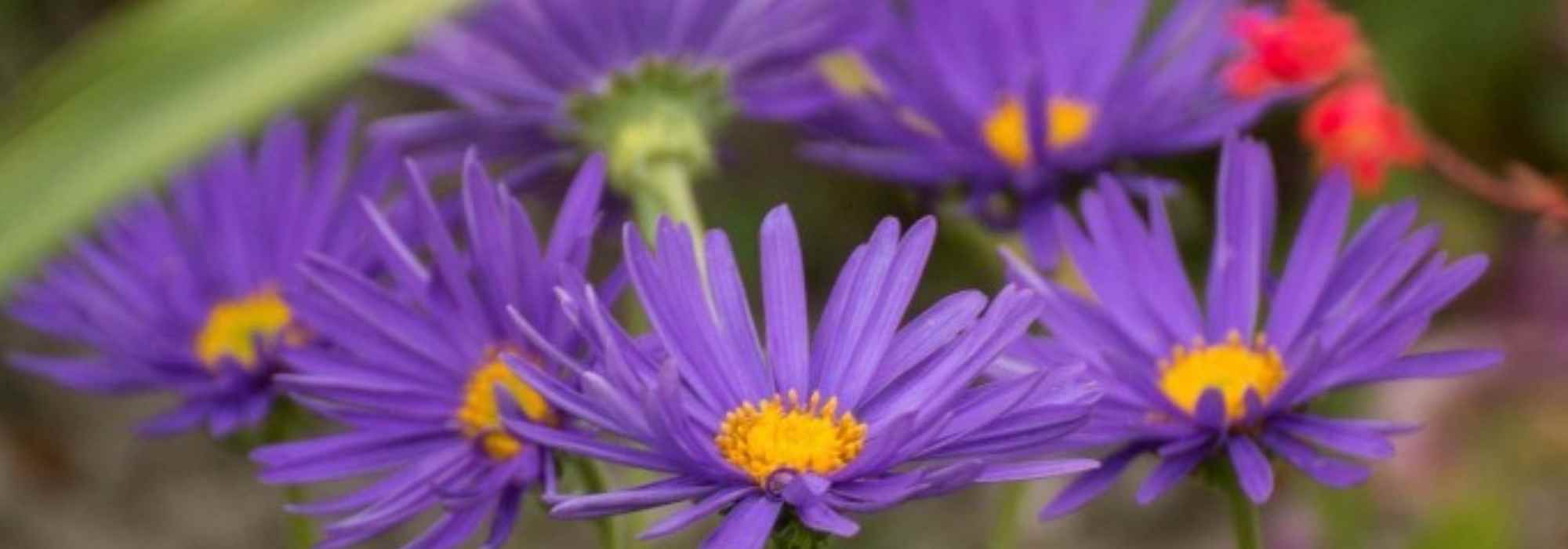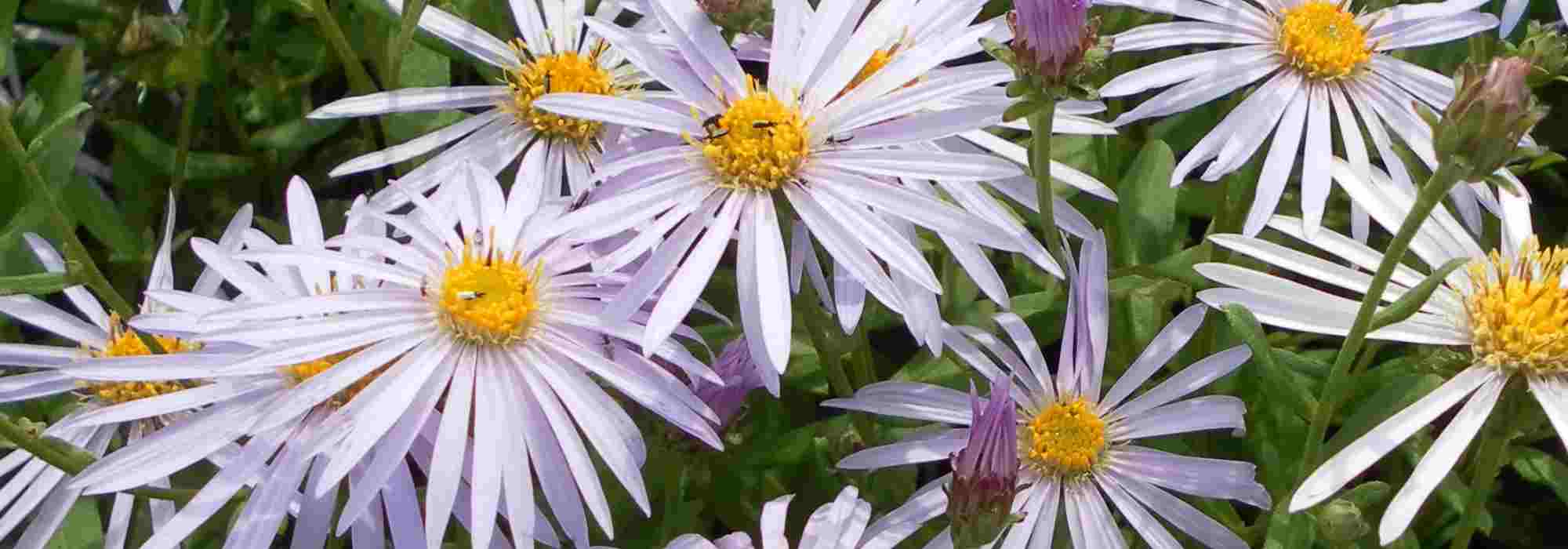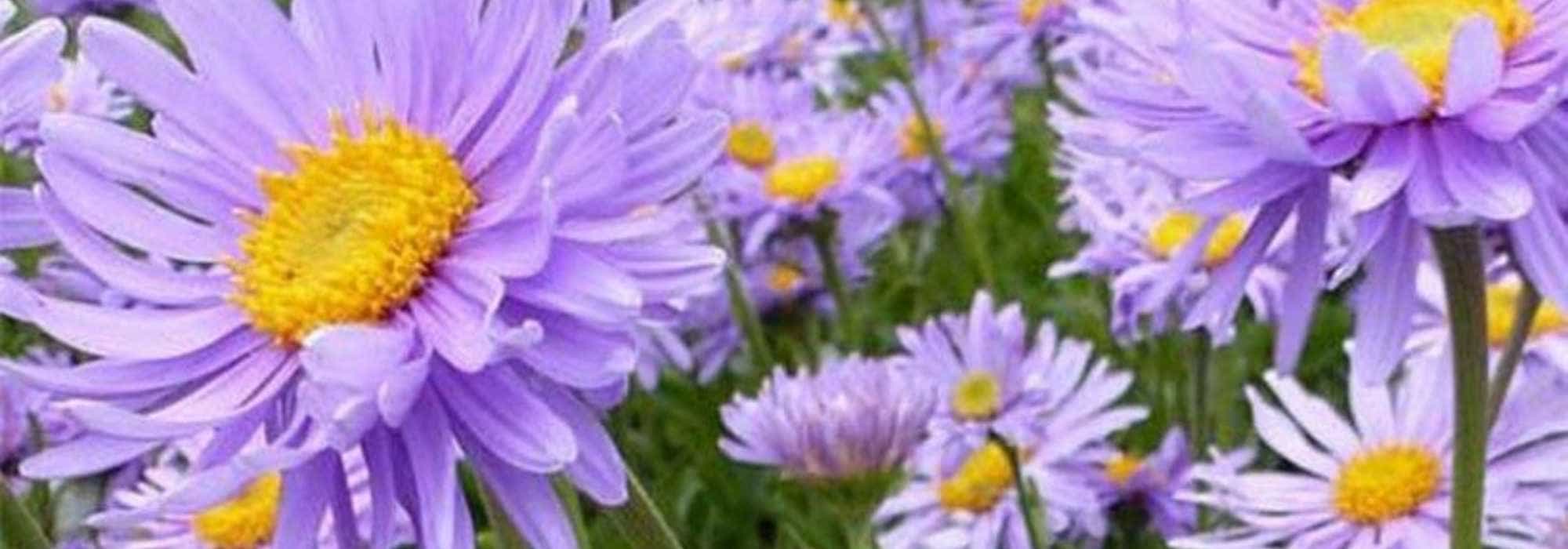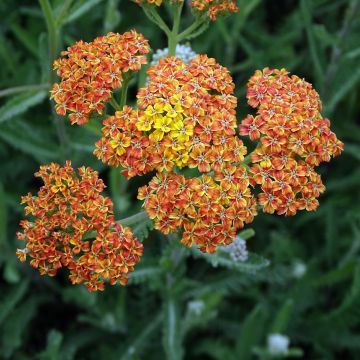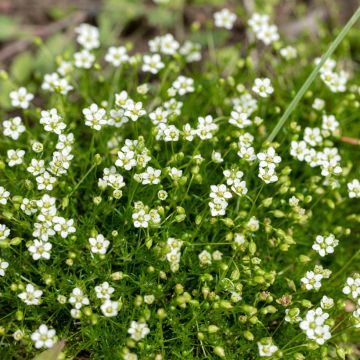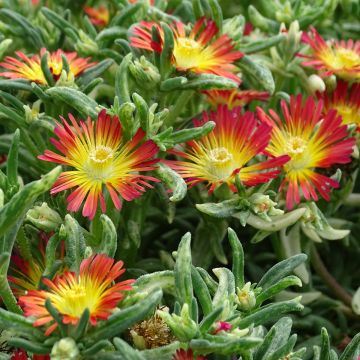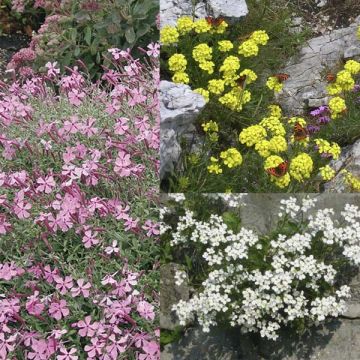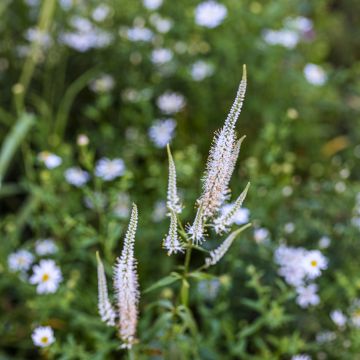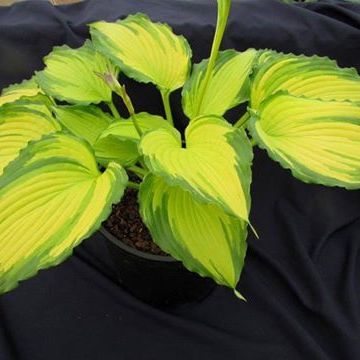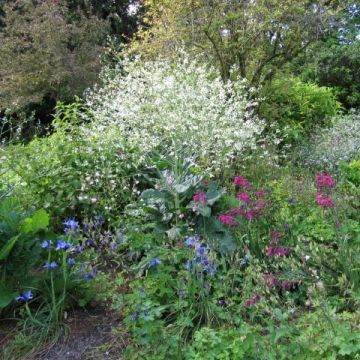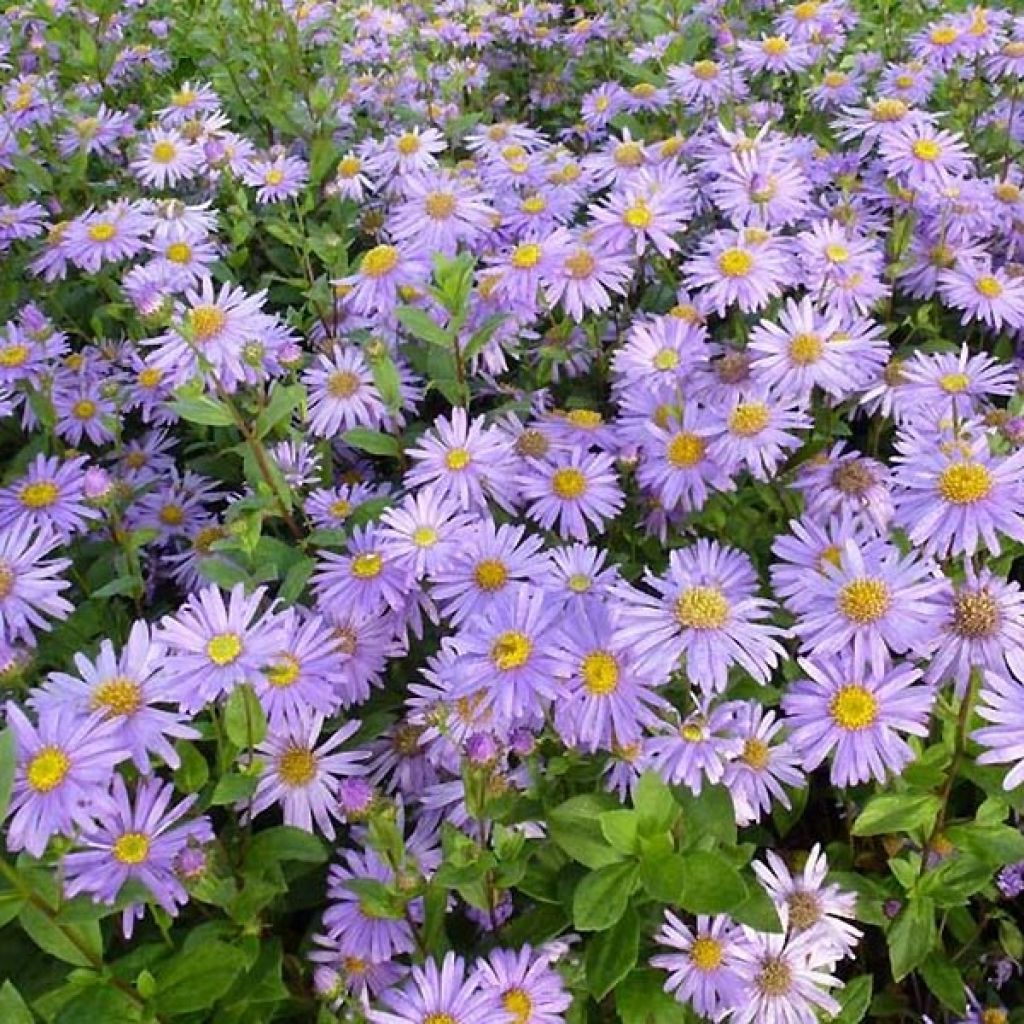

Aster frikartii Jungfrau
Aster frikartii Jungfrau
Aster x frikartii Jungfrau
Frikart's Aster
A safe bet
Laurence, 26/08/2025
Special offer!
Receive a €20 voucher for any order over €90 (excluding delivery costs, credit notes, and plastic-free options)!
1- Add your favorite plants to your cart.
2- Once you have reached €90, confirm your order (you can even choose the delivery date!).
3- As soon as your order is shipped, you will receive an email containing your voucher code, valid for 3 months (90 days).
Your voucher is unique and can only be used once, for any order with a minimum value of €20, excluding delivery costs.
Can be combined with other current offers, non-divisible and non-refundable.
Home or relay delivery (depending on size and destination)
Schedule delivery date,
and select date in basket
This plant carries a 12 months recovery warranty
More information
We guarantee the quality of our plants for a full growing cycle, and will replace at our expense any plant that fails to recover under normal climatic and planting conditions.

Does this plant fit my garden?
Set up your Plantfit profile →
Description
Aster frikartii 'Jungfrau' is a beautiful variety of Frikart's aster whose name translates from German as 'young girl'. Coquettish and fresh, this perennial with a rather compact habit offers long-lasting and bright blue-mauve flowers with golden hearts, from mid-summer to autumn. Frikart's asters are very easy to grow in the sun, in well-drained soil, including soil which contains limestone or is fairly dry in summer. These excellent border plants require very little maintenance, apart from some pruning in early spring.
The Aster x frikartii, made famous by the well-known variety 'Mönch', is a horticultural hybrid that was created in the Frikart nursery in Switzerland in the 1920s. It is the result of cross-breeding the Aster amellus, a botanical species found in Europe, and A. thomsonii, native to the western Himalayas. It is a perennial plant with a bushy habit, hardy and drought resistant, which prefers alkaline soil and full sun. This cross-breeding has given rise to numerous cultivars that are all excellent garden plants.
Aster frikartii 'Jungfrau' has a fairly compact habit, forming a tuft of leafy stems that will quickly reach about 60 cm (24in) in height and 30-40 cm (12-16in) in width at the base, depending on the growing conditions. The stems bear medium green leaves, oval in shape, roughly dentate on the margin. Flowering generally begins in August and lasts for several weeks, sometimes until October depending on the region. At the tips of the stems appear generous clusters of inflorescences in capitules, what we might call flower heads. Each head, measuring 3 to 4 cm (1 to 2in) in diameter, is composed of a collar of fine ligulate florets surrounding a bright yellow centre. The colour of the florets gradually changes from blue to blue-mauve and then to violet, while the yellow centre turns bronze. The flowers are much visited by bees. The stems of this aster are relatively flexible, but they generally do not require staking in moderately fertile and not too moist soil. The above-ground vegetation of this perennial dries up in winter and regrows from the stump in spring.
Perfect in country-inspired, romantic or natural style borders, this Jungfrau aster thrives in soils that are less favourable to the large opulent New England or New Belgium asters, which require more water and nutrients. It also has the advantage of being less susceptible to powdery mildew and adapting more easily to most European regions. It pairs beautifully with medium-sized grasses, shrubby salvias or herbaceous plants, or with nepetas and agastaches. Aster flowers are perfect for bouquets, so consider pairing them with white or pink dahlias, for instance.
Aster frikartii Jungfrau in pictures
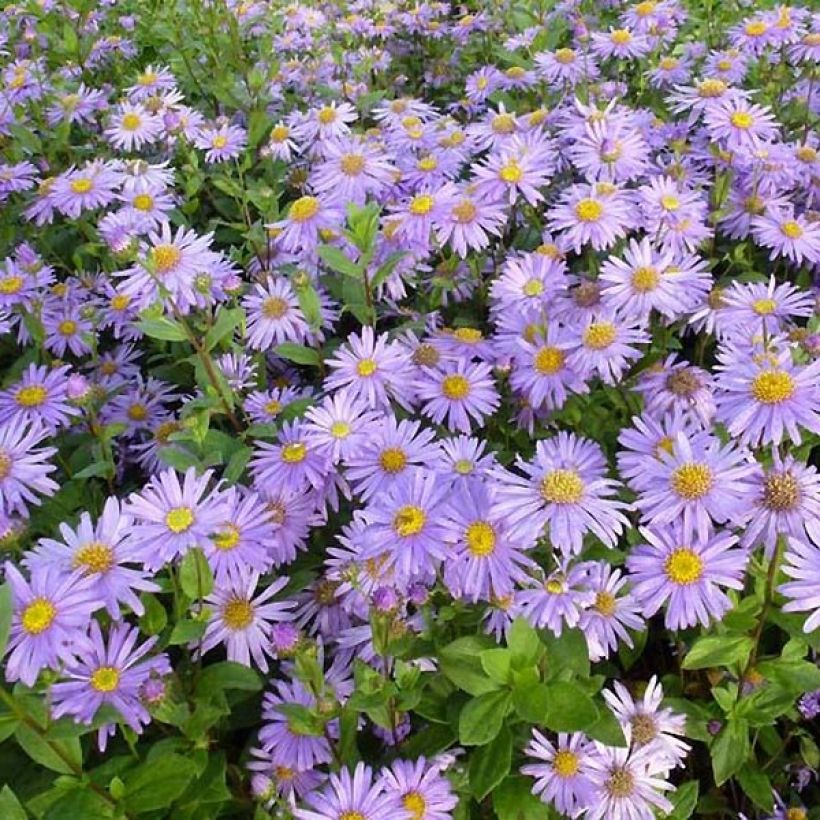

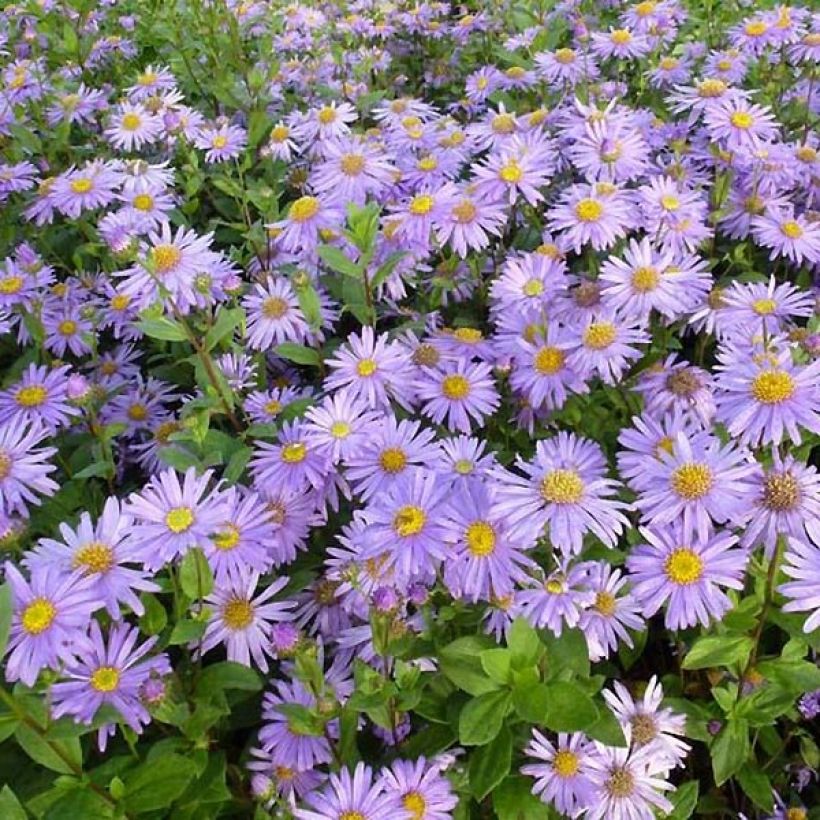

Flowering
Foliage
Plant habit
Botanical data
Aster
x frikartii
Jungfrau
Asteraceae
Frikart's Aster
Cultivar or hybrid
Other Asters
View all →Planting and care
Plant your Aster x frikartii 'Jungfrau' preferably in autumn or spring. Choose a sunny site, or a partially shaded one in warmer regions; asters in general do not appreciate shade and need brightness to flower well. To prevent the stems from bending, find a location sheltered from strong winds e.g. near a hedge or wall. The soil type doesn't matter much, and limestone is not a problem. Ensure good drainage in heavy soil by adding some gravel to the soil at the time of planting. Remember to retain moisture around the base of perennials by mulching your flowerbeds from June onwards - this will make the flowering of 'Jungfrau' even more generous from August onwards. Not very susceptible to diseases, Frikart's aster requires very little maintenance: a shovel of compost in spring, and pruning of the stems at the end of winter.
Planting period
Intended location
Care
Planting & care advice
-
, onOrder confirmed
Reply from on Promesse de fleurs
Similar products
Haven't found what you were looking for?
Hardiness is the lowest winter temperature a plant can endure without suffering serious damage or even dying. However, hardiness is affected by location (a sheltered area, such as a patio), protection (winter cover) and soil type (hardiness is improved by well-drained soil).

Photo Sharing Terms & Conditions
In order to encourage gardeners to interact and share their experiences, Promesse de fleurs offers various media enabling content to be uploaded onto its Site - in particular via the ‘Photo sharing’ module.
The User agrees to refrain from:
- Posting any content that is illegal, prejudicial, insulting, racist, inciteful to hatred, revisionist, contrary to public decency, that infringes on privacy or on the privacy rights of third parties, in particular the publicity rights of persons and goods, intellectual property rights, or the right to privacy.
- Submitting content on behalf of a third party;
- Impersonate the identity of a third party and/or publish any personal information about a third party;
In general, the User undertakes to refrain from any unethical behaviour.
All Content (in particular text, comments, files, images, photos, videos, creative works, etc.), which may be subject to property or intellectual property rights, image or other private rights, shall remain the property of the User, subject to the limited rights granted by the terms of the licence granted by Promesse de fleurs as stated below. Users are at liberty to publish or not to publish such Content on the Site, notably via the ‘Photo Sharing’ facility, and accept that this Content shall be made public and freely accessible, notably on the Internet.
Users further acknowledge, undertake to have ,and guarantee that they hold all necessary rights and permissions to publish such material on the Site, in particular with regard to the legislation in force pertaining to any privacy, property, intellectual property, image, or contractual rights, or rights of any other nature. By publishing such Content on the Site, Users acknowledge accepting full liability as publishers of the Content within the meaning of the law, and grant Promesse de fleurs, free of charge, an inclusive, worldwide licence for the said Content for the entire duration of its publication, including all reproduction, representation, up/downloading, displaying, performing, transmission, and storage rights.
Users also grant permission for their name to be linked to the Content and accept that this link may not always be made available.
By engaging in posting material, Users consent to their Content becoming automatically accessible on the Internet, in particular on other sites and/or blogs and/or web pages of the Promesse de fleurs site, including in particular social pages and the Promesse de fleurs catalogue.
Users may secure the removal of entrusted content free of charge by issuing a simple request via our contact form.
The flowering period indicated on our website applies to countries and regions located in USDA zone 8 (France, the United Kingdom, Ireland, the Netherlands, etc.)
It will vary according to where you live:
- In zones 9 to 10 (Italy, Spain, Greece, etc.), flowering will occur about 2 to 4 weeks earlier.
- In zones 6 to 7 (Germany, Poland, Slovenia, and lower mountainous regions), flowering will be delayed by 2 to 3 weeks.
- In zone 5 (Central Europe, Scandinavia), blooming will be delayed by 3 to 5 weeks.
In temperate climates, pruning of spring-flowering shrubs (forsythia, spireas, etc.) should be done just after flowering.
Pruning of summer-flowering shrubs (Indian Lilac, Perovskia, etc.) can be done in winter or spring.
In cold regions as well as with frost-sensitive plants, avoid pruning too early when severe frosts may still occur.
The planting period indicated on our website applies to countries and regions located in USDA zone 8 (France, United Kingdom, Ireland, Netherlands).
It will vary according to where you live:
- In Mediterranean zones (Marseille, Madrid, Milan, etc.), autumn and winter are the best planting periods.
- In continental zones (Strasbourg, Munich, Vienna, etc.), delay planting by 2 to 3 weeks in spring and bring it forward by 2 to 4 weeks in autumn.
- In mountainous regions (the Alps, Pyrenees, Carpathians, etc.), it is best to plant in late spring (May-June) or late summer (August-September).
The harvesting period indicated on our website applies to countries and regions in USDA zone 8 (France, England, Ireland, the Netherlands).
In colder areas (Scandinavia, Poland, Austria...) fruit and vegetable harvests are likely to be delayed by 3-4 weeks.
In warmer areas (Italy, Spain, Greece, etc.), harvesting will probably take place earlier, depending on weather conditions.
The sowing periods indicated on our website apply to countries and regions within USDA Zone 8 (France, UK, Ireland, Netherlands).
In colder areas (Scandinavia, Poland, Austria...), delay any outdoor sowing by 3-4 weeks, or sow under glass.
In warmer climes (Italy, Spain, Greece, etc.), bring outdoor sowing forward by a few weeks.






























